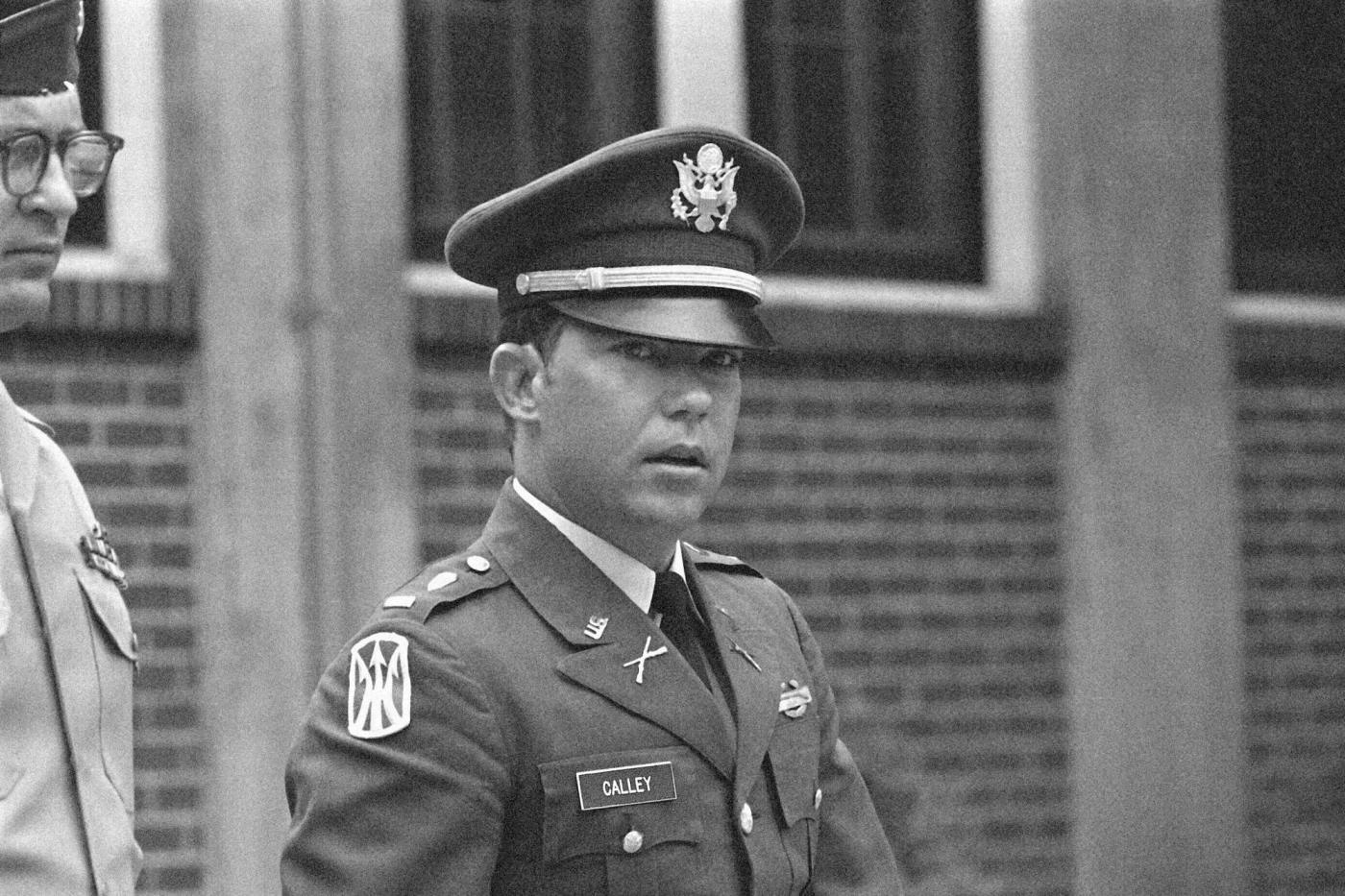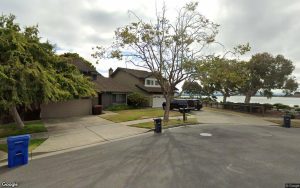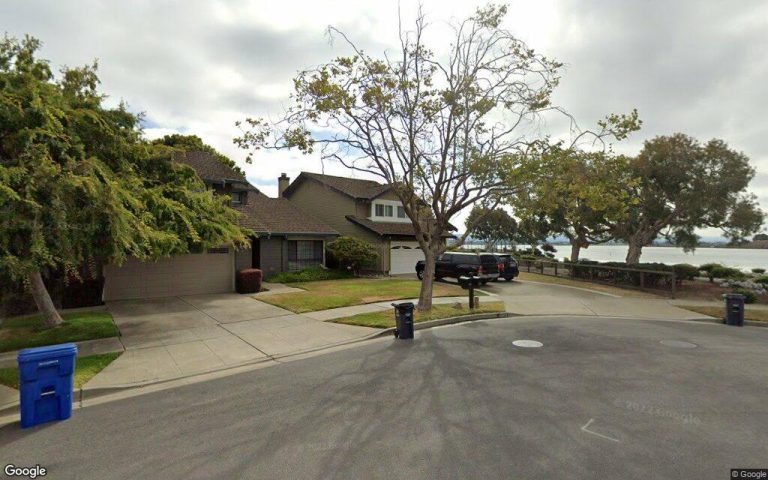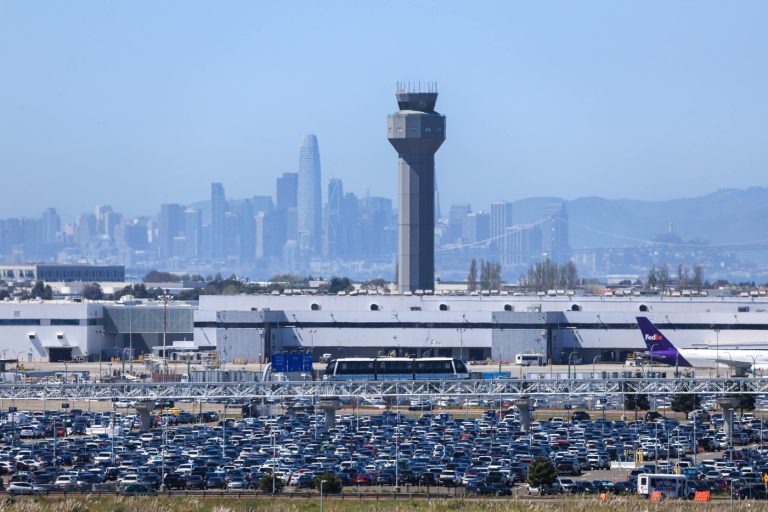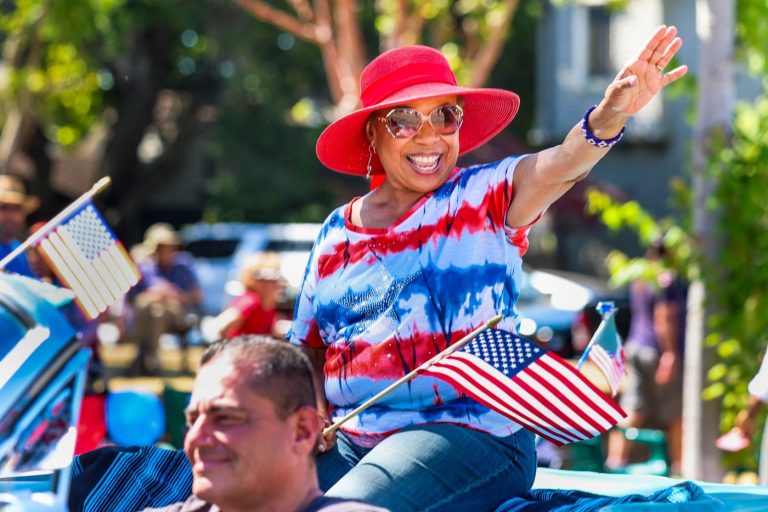GAINESVILLE, Fla. — William Laws Calley Jr., who as an Army lieutenant led the U.S. soldiers who killed hundreds of Vietnamese civilians in the My Lai massacre, the most notorious war crime in modern American military history, has died. He was 80.
Calley died April 28, according to his Florida death record, which said he had been living in an apartment in Gainesville. His death was first reported by The Washington Post on Monday, citing his death certificate.
Calley had lived in obscurity in the decades since he was court-martialed and convicted in 1971, the only one of 25 men originally charged to be found guilty in the massacre, which helped turn American opinion against the war in Vietnam.
On March 16, 1968, Calley led American soldiers of the Charlie Company on a mission to confront a crack outfit of their Vietcong enemies. Instead, over several hours, the soldiers killed 504 unresisting civilians, mostly women, children and elderly men, in My Lai and a neighboring community.
The men were angry: Two days earlier, a booby trap had killed a sergeant, blinded a GI and wounded several others while Charlie Company was on patrol.
Soldiers eventually testified to the U.S. Army investigating commission that the murders began soon after Calley led Charlie Company’s first platoon into My Lai that morning. Some were bayoneted to death. Families were herded into bomb shelters and killed with hand grenades. Other civilians slaughtered in a drainage ditch. Women and girls were gang-raped.
It wasn’t until more than a year later that news of the massacre became public. And while the My Lai massacre was the most notorious massacre in modern U.S. military history, it was not an aberration: Estimates of civilians killed during the U.S. ground war in Vietnam from 1965 to 1973 range from 1 million to 2 million.
The U.S. military’s own records, filed away for three decades, described 300 other cases of what could fairly be described as war crimes. My Lai stood out because of the shocking one-day death toll, stomach-churning photographs and the gruesome details exposed by a high-level U.S. Army inquiry.
Investigations into the massacre and allegations of a Pentagon coverup were launched after a complaint by a helicopter pilot, Hugh Thompson Jr., who saved 16 Vietnamese children in the village and later testified against Calley.
Multiple other soldiers at the scene also spoke out after the scandal broke. Some said civilian deaths were inevitable in a war where the enemy could be anywhere. Others said Calley, who was charged with killing 109 civilians, shouldn’t have been singled out.
“Calley, he didn’t kill the 109 all by himself. There was a company there,” said Herbert Carter, a soldier from Houston. “We went through the village. We didn’t see any VC (Viet Cong). People came out of their hootches (huts) and the guys shot them down and then burned the hootches, or burned the hootches and then shot the people when they came out. … It went on like this all day. Some of the guys seemed to be having a lot of fun doing it.”
Calley was convicted in 1971 for the murders of 22 people during the rampage. He was sentenced to life in prison but served only three days because President Richard Nixon ordered his sentence reduced. He served three years of house arrest.
After his release, Calley stayed in Columbus and settled into a job at a jewelry store owned by his father-in-law before moving to Atlanta, where he avoided publicity and routinely turned down journalists’ requests for interviews.
Calley broke his silence in 2009, at the urging of a friend, when he spoke to the Kiwanis Club in Columbus, Georgia, near Fort Benning, where he had been court-martialed.
“There is not a day that goes by that I do not feel remorse for what happened that day in My Lai,” Calley said, according to an account of the meeting reported by the Columbus Ledger-Enquirer. “I feel remorse for the Vietnamese who were killed, for their families, for the American soldiers involved and their families. I am very sorry.”
He said his mistake was following orders, which had been his defense when he was tried. His superior officer was acquitted.
Related Articles
Sheila Jackson Lee dies at 74; longtime Texas congresswoman was ‘a fierce champion of the people’
John Mayall dies at 90; British blues pioneer helped introduce the world to Eric Clapton, Mick Fleetwood and other musical superstars
‘All My Children’ star’s death hits soap opera fans with another shocking, unexpected loss
‘Best guitar player in the world’ with strong Bay Area ties dies at 81
Abdul ‘Duke’ Fakir dies at 88; singer was last original member of the Four Tops
William George Eckhardt, the chief prosecutor in the My Lai cases, said in 2009 that he was unaware of Calley ever apologizing before.
“It’s hard to apologize for murdering so many people,” said Eckhardt. “But at least there’s an acknowledgment of responsibility.”
Calley was born in June 8, 1943 in South Florida, where friends called him “Rusty” growing up. He eventually dropped out of Palm Beach Junior College, and worked as a dishwasher, bellhop, railroad switchman, salesman and insurance appraiser before joining the Army in 1966.
At about 5-foot, 3-inches tall and 120 pounds when he was in the Army, Calley didn’t stand out. Fellow officer candidates told the AP in 1969 that there was nothing unusual about him. But his military career was advancing until the scandal. Months after the massacre, he returned home, then re-upped for another tour. Eventually, he was wounded, awarded the Purple Heart, and won two Bronze Star medals.
His sister Dawn was living with their father in a mobile home in Hialeah when she told reporters during the trial that her brother was a “sweet, sensitive guy.”
Calley married and had a son after returning to civilian life, but later got divorced. Messages left for his son and ex-wife on Tuesday were not immediately returned.
